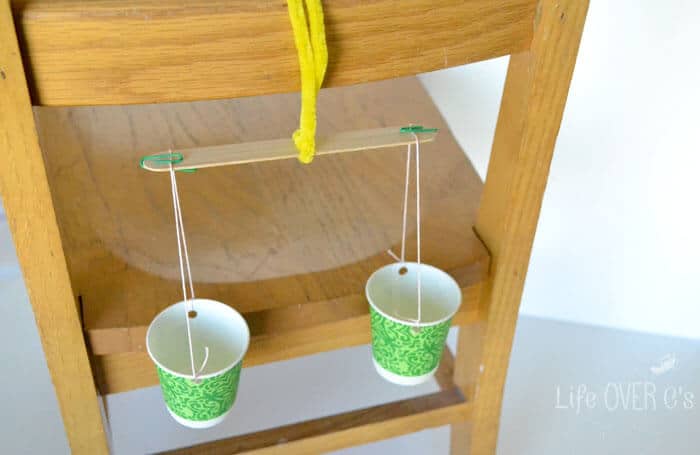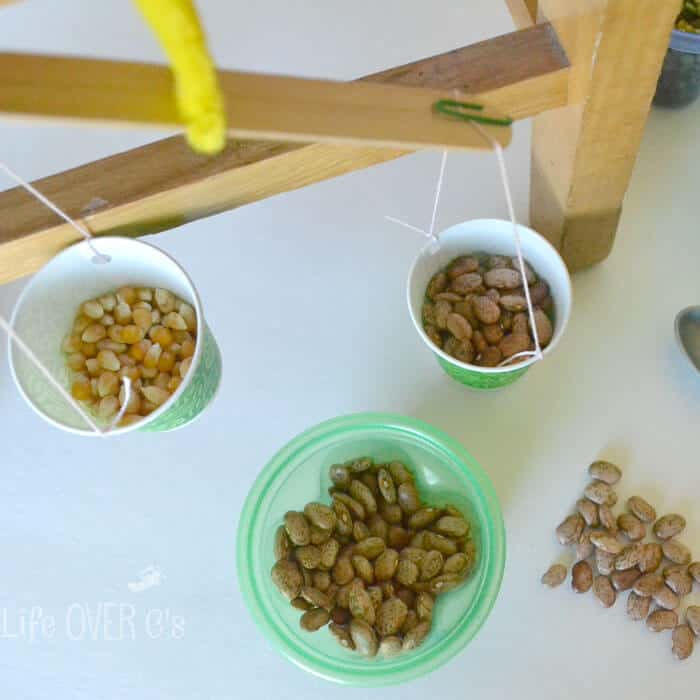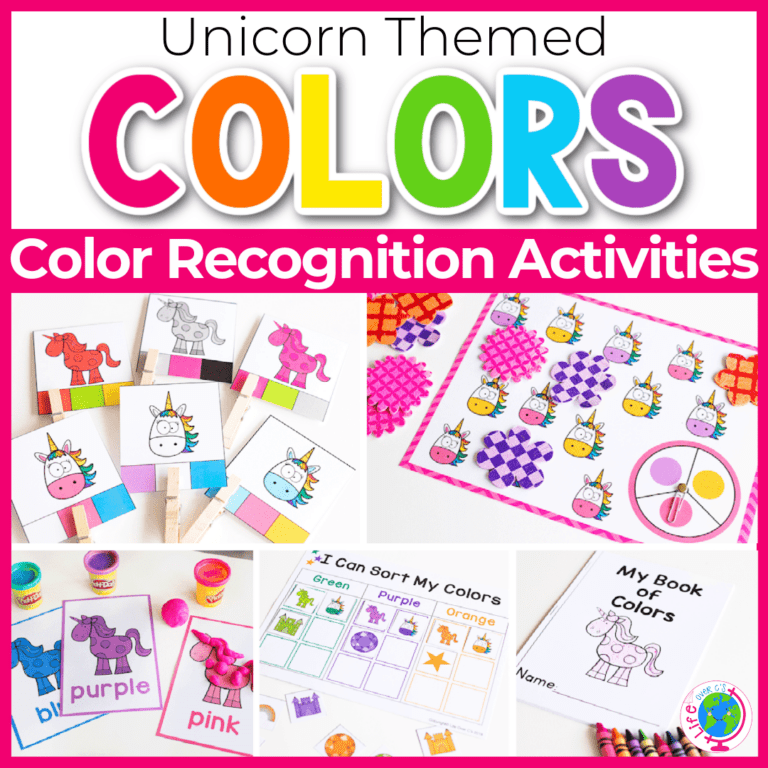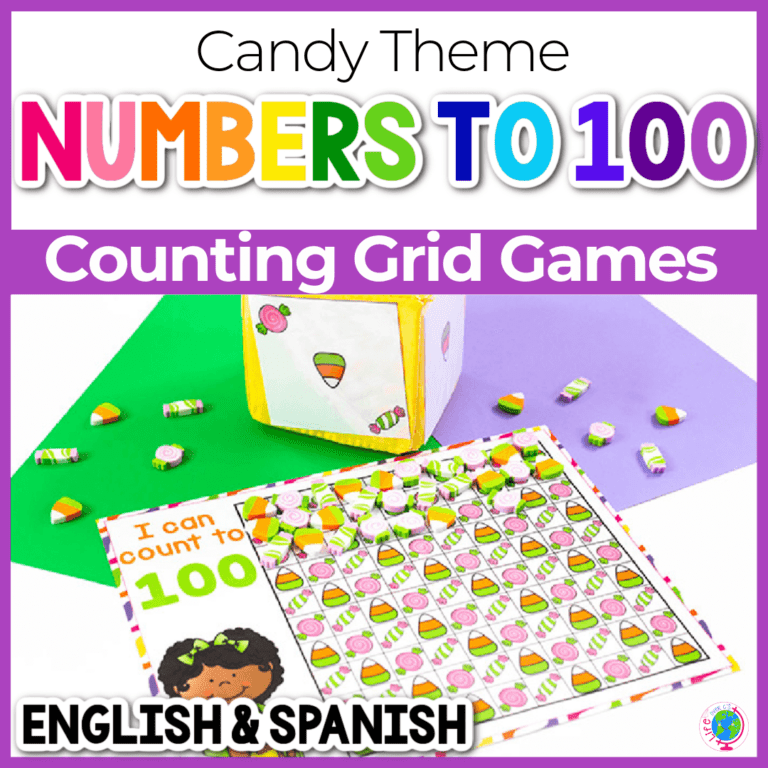STEM for Kids: Exploring Weight on the Farm
Fall is here and all the farms around us are harvesting all their crops. Grain bins are filling up and trucks are moving out. It’s so fascinating to see. So obviously I thought of measurement activities for preschool because that’s how a teacher’s mind works! We brought the farm to our house to explore weight with our own set of crops. The Exploring Weight on the Farm activity fits into other preschool farm theme activities. It’s part fine motor skills and part math skills, and a whole lotta STEM measurement! It’s a fun way to experiment with weight and make comparisons using a small balance scale. Your kids will love it!

Recommended Grade Level:
Teaching Measurement in Early Childhood
farm activities for preschoolers
EARLY MEASUREMENT IN PRESCHOOL AND KINDERGARTEN SHOULD INCLUDE LOTS OF HANDS-ON EXPLORATION.
Preschool and kindergarten measurement activities need to be hands-on so kids can see, feel, hear, taste, and smell the results (not all of those every time, of course).
This on-the-farm preschool activity is perfect for letting young learners explore weight, capacity, and more. By using a homemade balance scale, kids are comparing different quantities to see which weighs more/less.
You can also use other math manipulatives on one side of your scale, like Unifix cubes or counting chips, to compare the crops to math tools.
I love that this activity actually has two parts: first we actually make the scale and next we get to explore with it! Both of those farm math activities for preschool are highly engaging and educational.
As you’re completing the fun preschool farm science activity, pose thoughtful questions:
- How much popcorn is equal in weight to a half a cup of beans?
- Which weighs more, popcorn or split peas? How can you tell?
- Can you find equal amounts of split peas and dried beans?

What Can Preschoolers Learn From Preschool Measurement Activities?
preschool farm activities
SCIENCE AND MATH EXPERIMENTING IN EARLY GRADES SETS A SOLID FOUNDATION FOR MORE COMPLEX CONCEPTS. LET THEM EXPLORE, PRETEND PLAY, AND EXPERIMENT!
This is an opportunity to introduce, define, and practice a few important vocabulary words:
- Weight
- Mass
- Heavy/Light
- Balance/Equal

Why Is It Important For Kids To Explore Weight and Measurement?
Children are naturally curious about everything around them. Learning about weight and measurement helps them understand the world a little bit better.
Background Knowledge
Forming ideas in your mind about what weight means, and why we measure things is key background knowledge. One day those skills will be put to use to measure a bike stem from the center of a handlebar or weigh items at the grocery store.
Understand Units of Measurement
Basic early lessons and dramatic play about weighing and measuring sets the stage for learning units of measurement.
Connect with their Environment
Weighing with a farm theme helps kids connect with nature and our food supply. It opens up a world of knowledge relating to farms, foods, and natural processes.
Practice Problem Solving
Learning about weighing items makes children into problem-solvers and predictors. Which one will weigh more/less? Why?
How To Make The Exploring Weight On The Farm Activity
To Prep:
First, you need to make the balance scale. I came up with this mini version of a balance scale using a little bit of trial and error. But, finally I got one to work using a few supplies from our craft closet.
First, take your two cups and punch two holes in each one.
Cut identical lengths of string (mine were 12 inches each) and tie them in each hole (see picture below). Try to make the strings on the cups as equal as possible.

Step Two:
Loop the strings on each cup over opposite ends of your craft stick.
Use the paper clips to hold the strings in place so they won’t slip and slide all over the place.
Finally, create a hook using your chenille stick. Wrap it around the middle of the craft stick leaving enough at the top to form a hook.
Hang your scale somewhere so that neither cup touches the ground and they both have room to move up and down. We used the back of a chair.

Step Three:
Now it’s time to explore! I poured each of our grains in separate bowls. We used popcorn, dried beans, and split peas.
Let your kids start exploring the concept of weight through play. They can weigh a cupful of beans and a cupful of popcorn. Or they can put one popcorn kernel on one side of the scale and one bean on the other side of the scale. Which one weighs more?
Scooping. sorting, comparing sizes and weighing. It’s a great way to explore weight at the farm.

Extend the Activity
Record It
Part of the scientific process is to record results. You might even graph them! Help your child create a list of weights/objects.
Get Creative
While beans and corn are certainly along the lines of a farm theme, you could branch out into other items found in your pantry-cereal, rice, raisins, etc.
Draw
Close out the activity by drawing a farm scene with crayons, markers, or colored pencils. Kids can include and label plants that produced the crops they just weighed.
Do you love this activity?
Pin it for later!

Farm Activities You’ll Love:
More STEM Activities:
Search All Activities
Looking for more? Find exactly what you need here:














My kids would love this activity! Love that it is DIY and inexpensive! Thanks for sharing at Made for Kids!
Store-bought balance scales can be expensive. I love this frugal version! Thanks for sharing at the Thoughtful Spot!